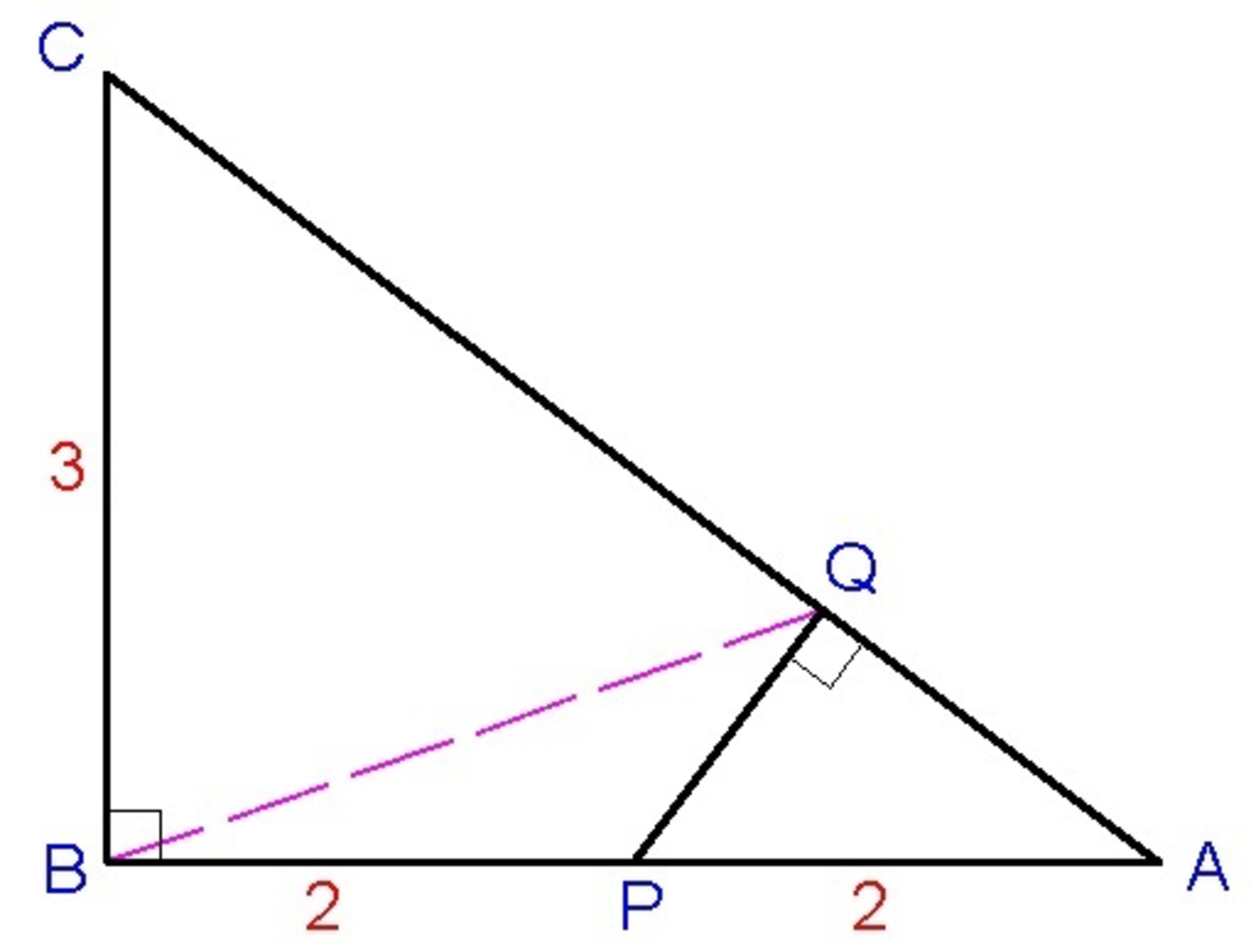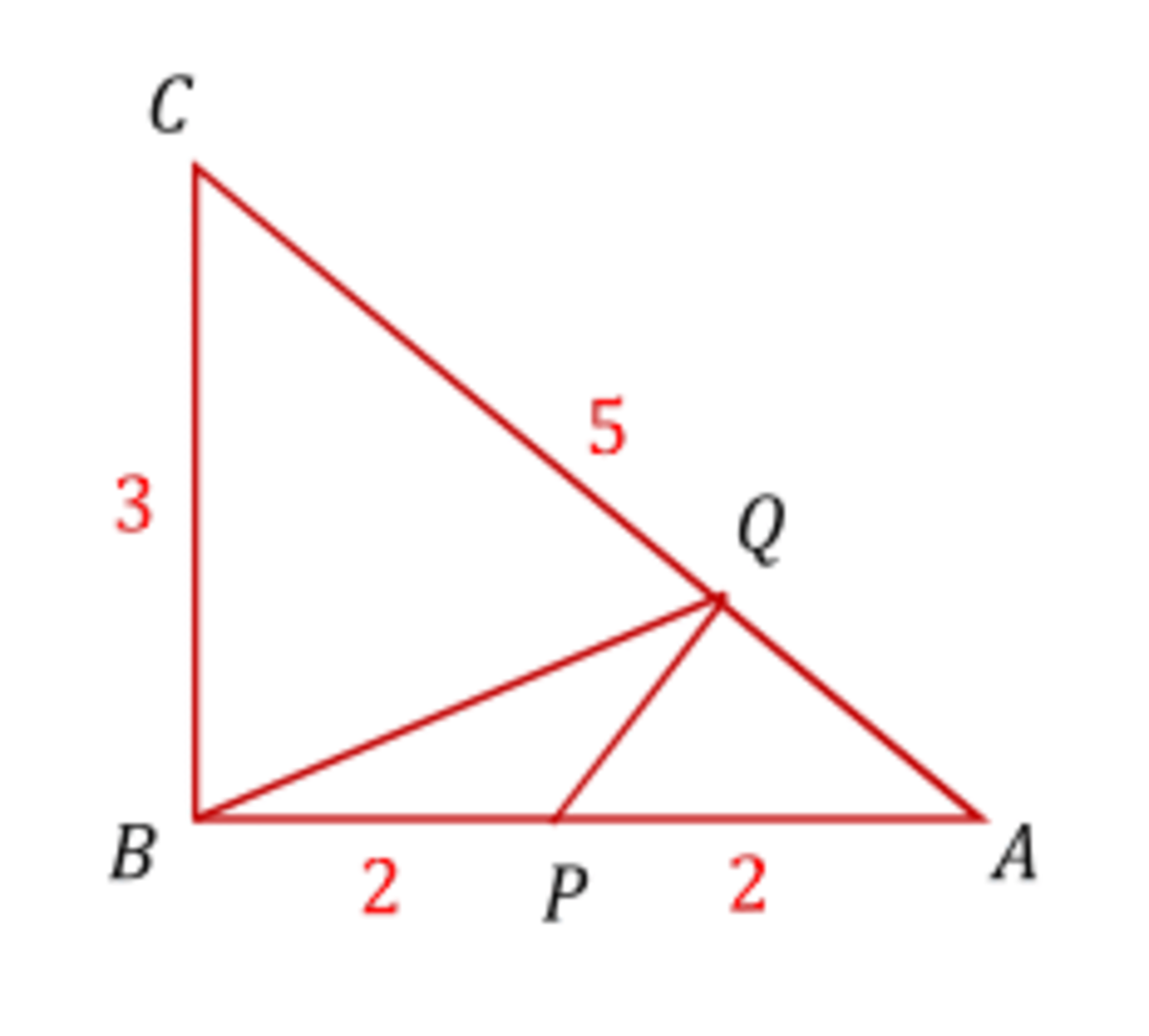A geometry problem by A Former Brilliant Member
 From the figure above,
C
B
=
3
,
B
P
=
2
and
P
A
=
2
. Find the length of
B
Q
. If your answer is of the form
b
a
c
where
a
,
b
and
c
are coprimes and
c
is square-free, give your answer as
a
+
b
+
c
.
From the figure above,
C
B
=
3
,
B
P
=
2
and
P
A
=
2
. Find the length of
B
Q
. If your answer is of the form
b
a
c
where
a
,
b
and
c
are coprimes and
c
is square-free, give your answer as
a
+
b
+
c
.
The answer is 22.
This section requires Javascript.
You are seeing this because something didn't load right. We suggest you, (a) try
refreshing the page, (b) enabling javascript if it is disabled on your browser and,
finally, (c)
loading the
non-javascript version of this page
. We're sorry about the hassle.
2 solutions
 △
C
B
A
and
△
Q
P
A
are similar, therefore
cos
(
∠
Q
A
B
)
=
5
4
and
Q
A
=
2
×
5
4
=
5
8
△
C
B
A
and
△
Q
P
A
are similar, therefore
cos
(
∠
Q
A
B
)
=
5
4
and
Q
A
=
2
×
5
4
=
5
8
Applying law of cosines to △ Q A B
B Q = 4 2 + ( 5 8 ) 2 − 2 × 4 × 5 8 × 5 4 = 5 4 1 3
Answer is 4 + 5 + 1 3 = 2 2
P C = 3 2 + 2 2 = 9 + 4 = 1 3
A C = 3 2 + 4 2 = 9 + 1 6 = 2 5 = 5
Since △ A Q P ∼ △ A B C , then
C B P Q = A C P A ⟹ 3 P Q = 5 2 ⟹ P Q = 5 6
Applying pythagorean theorem on △ P Q C : ⟹ ( P Q ) 2 + ( C Q ) 2 = ( C P ) 2 ⟹ ( 5 6 ) 2 + ( C Q ) 2 = ( 1 3 ) 2 ⟹ C Q = 5 1 7
Since m ∠ C B P ≅ m ∠ C Q P = 9 0 ∘ , B P Q C is a cyclic quadrilateral.
Applying Ptolemy's Theorem , we have
( B Q ) ( C P ) = ( P Q ) ( B C ) + ( B P ) ( Q C ) ⟹ ( B Q ) ( 1 3 ) = ( 5 6 ) ( 3 ) + ( 2 ) ( 5 1 7 ) ⟹ B Q = 5 4 1 3
Finally,
a + b + c = 4 + 5 + 1 3 = 2 2